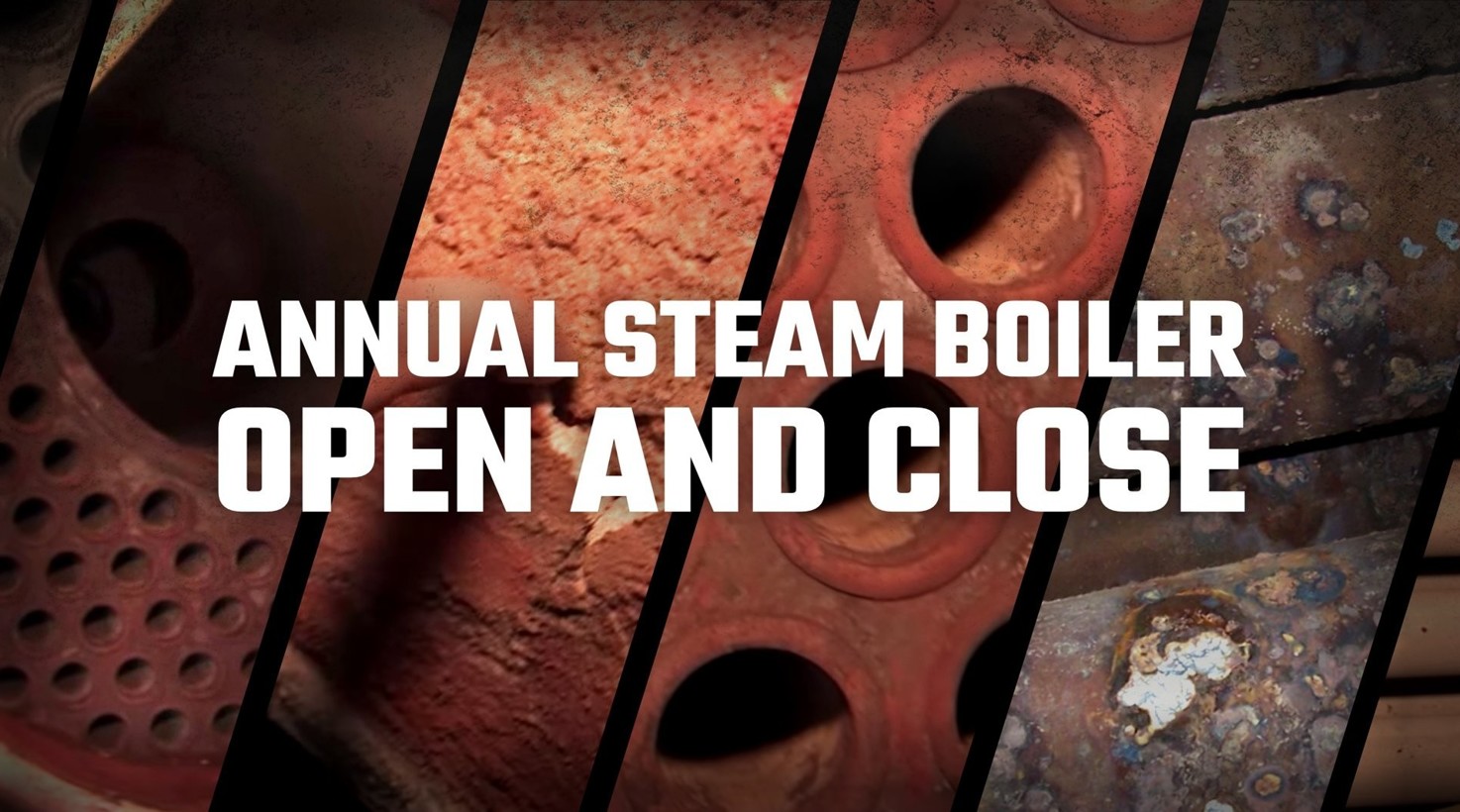It’s time for the annual spring ritual of Boiler Open and Close. While it may not be celebrated with the same enthusiasm as the Fourth of July or Thanksgiving, it really is an important event. Performed regularly, it’s one of the most important steps you can take to maintain the safety and efficiency of your system.
High-pressure boiler systems (15psi or higher) should be inspected at least once every year by a qualified technician. Low-pressure systems (less than 15psi) should be done every two years. During an open and close procedure, a technician will perform a series of inspections to make sure the boiler operates safely, and at maximum efficiency.
THE OPENING
Before the technician arrives, your boiler should be open. On the fire side, opening the boiler means removing the main front doors, and the main rear doors. On the water side, it means opening the hand holes. They’re the oblong plates found on the sides of most boilers, and they’re only used for inspection purposes. The rest of the time, they’re kept tightly sealed to preserve system pressure and integrity. Once the ends are open, the technician can examine the boiler’s interior surfaces for different kinds of impurities.
Before the inspection, all caps from the crosses and low water cut off heads should also be removed, so the technician will have access to inspect the water column and the control line. The manway hole on the top should also be open, allowing access to the tubes from above.
WATER SIDE
On the water side, the technician will be looking for scale, sediment, or any other kind of buildup, not only in the boiler but also in all the connected lines. There are several reasons why. That buildup will hinder the efficiency of your system by providing an extra heat barrier between the flame and the water. Just 1/32 of an inch of scale buildup requires a 2% increase in fuel to compensate. It’s like driving uphill all the time. But there’s more to the story, too. Scale can also cause inaccurate readings in sight glasses, and can hinder valve movement.
During the water side inspection, the technician will also examine the tubes for any evidence of pitting. Caused by oxidation or chemical interaction, pitting is just what it sounds like: depressions of various sizes that form on the tube surfaces. If ignored, pitting can turn into leaking, and leaking can be catastrophic. If the pitting is bad enough, the boiler will have to be re-tubed.
FIRE SIDE
On the fire side, the technician will be looking for a buildup of soot. Much like the scale on the water side, soot on the fire side prevents efficient heat transfer. In fact, just 1/8 inch of soot can result in up to 47% heat loss. That’s just wasted energy. Which translates to wasted money.
When the fire side is open, the technician will also inspect the refractory material, to make sure that it’s intact, and that it isn’t cracked, damaged, worn, or otherwise unsafe to use. The tube sheet will also be inspected, to make sure it isn’t cracked anywhere. If it is, that can be a sign of more damage to the fire-side internals. In that situation, it’s best to have a magnetic particle test performed to detect any leaks or cracks that may be starting to develop.
Once the inspection is complete, the boiler can be reassembled. It’s important to use new gaskets when putting it all back together, to preserve safety and performance for the next year.
Remember, WARE technicians are here to help with detailed inspections, and any parts or services you may ever need. Contact us and let us know how we can help.
